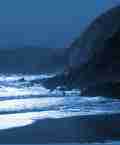 |
Search the site:

|
Views of The Clergy part 2 Dr O'Doherty, when Bishop of Galway in 1924, said that 'The dances indulged in were not clean, healthy Irish dances.' (He seemed to forget that the same clean, healthy Irish dances he referred to had been stopped and almost wiped out by his predecessors.) The bishop went on to tell parents, 'Fathers of this parish, if your girls do not obey you, lay the lash upon their backs.' In an address issued after their meeting in Maynooth College in October 1925, the archbishop and bishops of Ireland expressed the fear that the honour of Irish boys and the Christian modesty of Irish maidens that had been won for Ireland might be lost: '... dance halls, more especially in the general uncontrol of recent years, have deplorably aggravated the ruin of virtue due to ordinary human weakness.' My father told me numerous stories of the priest walking the roads at night or hiding in the bushes - when a boy and girl came walking by he would pounce out and beat the lad with the stick and send him in the opposite direction of the girl. I have heard many such stories including the one of the parish priest who was so against dancing and music that he used to prowl the country lanes at night in order to put a stop to these social gatherings which led to the occasion of sin. When he came upon a house dance he would storm in the door and proceed to scatter the dancers with his blackthorn stick, beating the musician and often putting his instrument into the fire. The boys would also get a good belt of the stick, and the girls would be marched home to their fathers who were encouraged to put the fear of God into them with a few lashes of the belt. The priest, having performed his so-called godly duty, would then use his most powerful weapon of intimidation and fear - the denouncing of the dancers and musician to all the parish from the altar at Sunday Mass. This policy of the clergy contributed to the gradual disappearance of house dances, crossroad ceilis and many other Irish cultural activities. In turn this meant that musicians, not being able to find any work, had to emigrate to England, America and other countries with strong Irish communities where their talents would be appreciated. Ireland's cultural life was certainly the poorer for their leaving. After very strong pressure from the clergy, the State introduced The Public Dance Halls Act of 1935, which forbade the holding of dances without a licence in buildings, yards, gardens or other enclosed places whether roofed or not, temporary or permanent. This law had the effect of almost wiping out informal social gatherings and did serious damage to the preservation and development of Irish dance. On the Great Blaskets in 1936, Eibhlis Ní S&iucute;illeabháin wrote: 'Great changes have come on the Island lately, with the visit of two Redemptorist Fathers ... no mixed bathing is allowed ... no dancing in any house, day or night, no one out later than 10.30 pm.' While today we may read these old laws and sermons against music, dance and social gatherings with much amusement, in their day they had to be taken very seriously. To go against the clergy could mean the blacking of an individual in the community and the refusal by the parish priest to give a reference, which was the practice in those days when it was time to leave the parish to seek work. back to part 1.
From the Appletree Press title: The Complete Guide To Irish Dance.
|
[ Back to Top ]
All Material © 1999-2004 Irelandseye.com and contributors
